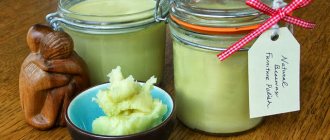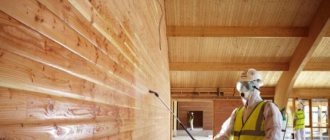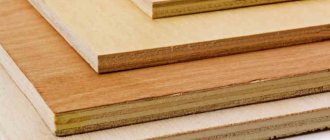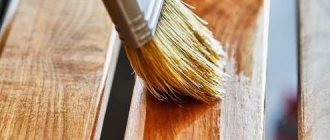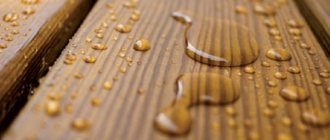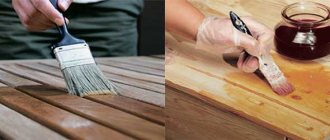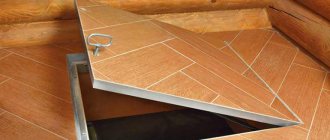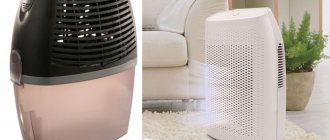Dampness in the cellar is a huge problem for most summer residents and country residents. As a rule, humidity increases due to poor-quality thermal or waterproofing, as well as due to the large number of vegetables and fruits stored indoors. In some cases, condensation forms due to the lack of a ventilation system. Whatever the reason, a wet cellar is in no way suitable for storing food in it, which will quickly deteriorate if constantly exposed to moisture. That is why moisture needs to be removed and completely get rid of such a phenomenon as condensation. Today we will talk about how to dry the cellar and properly prepare it for planting the harvest.
Carrying out preparatory work
The humidity in the cellar is usually at a fairly high level, so condensation forms on the walls and ceiling. Preparatory work includes completely emptying the room of vegetables stored there since last year (they are no longer suitable for consumption, so it is best to remove them from storage).
In addition, it is recommended to temporarily get rid of wooden elements of the room (racks, pallets, various bins, boxes, shelves, etc.). All wooden structures must be taken outside and then washed with hot water and soapy water. They must be completely dry before further use.
Before dehumidifying the air in the storage room, all supplies and products should be removed from there.
A fairly common and effective method of disinfecting wooden storage elements is applying a layer of whitewash with the addition of ordinary copper sulfate. As a rule, ordinary lime is used as whitewash, which can be found for sale in any store. Air humidity and condensation in this case will not affect the wood.
In addition, to protect wooden elements from mold and mildew, it is necessary to apply antiseptic impregnation to them. You can use any composition sold in the store.
The walls and ceiling of the storage facility can also then be whitewashed and dried. Otherwise, due to increased dampness in the room, it will not be possible to preserve the crop in proper form. In the fall, when it rains continuously, it will not be possible to properly dry the cellar, so all work must be carried out in the summer.
Basement Inspection
But if the “red” alarm was not declared in vain, then it’s time to carry out a rescue operation. You need to start by clearing out the premises. All food preparations are removed from it. Then the wooden devices for storing food are disassembled.
Boxes, barrels, shelves are brought to the surface. Everything that has already absorbed moisture requires thorough drying. And this is easiest to do outdoors. And it's better on a sunny day.
Even a wooden floor will have to be dismantled if it is wet. Moreover, the boards will require a thorough inspection. If during inspection traces of rotting are found even at the initial stage, the materials are rejected without regret. The rest of the board is dried and treated with an antiseptic for further use. Can be whitened with lime.
Solution for disinfecting floorboards Source 9ban.ru
If the flooding of the basement is not yet in its final stages, then you can try to carry out light military operations, without the help of heavy artillery. To do this, all doors leading into the room are opened and left in this position for the whole day. True, this can only help in the hot summer.
And also with good ventilation. The latter is checked by burning paper. If, when it approaches the vent, inside the cellar, the flame continues to burn evenly, then the ventilation is not working. The deviation of the flames towards the hole indicates the good condition of the system.
You can try cleaning the pipes. Perhaps they are clogged. To do this, a rope is fed from the surface into the ventilation outlet. When she comes out of the vent in the basement, a pipe cleaner is tied to her. The structure is pulled through the pipe by pulling the rope back.
Cleaning the cellar ventilation Source kliningovyj-raj.ru
In addition to ventilation, a small wet spot on the wall can be dealt with in one old-fashioned way. A container with materials that can absorb moisture well is installed near the partition. This is charcoal, sawdust or lime. Salt and freshly ground coffee help a lot. The latter eliminates unpleasant symptoms. Upon completion of the operation, they should be removed from the premises.
When the problem is much more serious and the basement is badly damaged, then only radical methods will help. And they will require decisive and time-consuming action. It is necessary to clean all surfaces from dirt and fungus. After this, complete disinfection is carried out.
But if the floors are earthen, then you will have to remove a layer at least 5 cm thick. Then add dry sand. But first treat the surface with manganese.
Adding sand to floors in the cellar Source ural-resurs.su
How does the storage dry out?
In order to get rid of excess moisture in the cellar, it is not enough to simply open all the ventilation holes and the hatch cover. In the cellar, the air will systematically cool down, and the moisture from it will condense, so it will not be possible to dry the underground room with ordinary ventilation. Air humidity and condensation will not go away even after several days of keeping the storage facility with the hatch open. To dry the cellar before the seasonal crop planting, more radical methods should be used.
There are several most common ways to dry a room. Air humidity and condensation are a big problem, but with forced drying they are quite easy to get rid of.
So, you can remove excess dampness, humidity and condensation in the following ways:
- Drying a cellar or vegetable storage using an iron stove.
- Drying the basement using a broiler.
- Using the most ordinary candles, which will improve natural air draft.
- Use of special dehumidifiers.
It should be noted that heating the storage facility using an iron stove is an extremely labor-intensive and troublesome task, so it is recommended to abandon this method immediately. And not everyone has the opportunity to install such a stove in storage. It is better to use the remaining three methods, since it is important to dry the cellar quickly and without unnecessary hassle.
Lack of underground ventilation
Some builders do not install vents in the crawl space. This causes the appearance of dampness, mold, and mildew in the warm season in the summer. During the heating season, these manifestations may disappear from the floor surface. But their destruction of the floor covering will continue.
This cause of dampness can be eliminated by installing vents. In the opposite walls, the area of the underground space, holes Ø 60-120 mm are made. It is better to place them diagonally from each other. To protect against rodents, the openings are covered with metal mesh. Options for the location of the vents can be made in accordance with the figures below.
Insufficient floor insulation
Savings on materials, poor-quality insulation, and improper design of the underground space lead to the appearance of dampness in it. And after some time, its unpleasant companions will appear on the surface of the floor inside the house. Having discovered this reason for the appearance of moisture, you will have to additionally insulate the underground space. In this case, dismantling the finished floor surface is inevitable. Dampness will disappear only with proper insulation.
Quick drying using a broiler
You can remove excess air humidity and condensation from the cellar using the simplest fryer. This small (portable) device can be found in almost any country farm. In any case, you can ask your neighbors.
The fryer quickly heats the air in the room.
Before drying the cellar using a roasting pan, it is necessary to partially get rid of excess dampness by natural drying for several days. In this case, the fryer will only “finish off” the remaining dampness, humidity and condensation.
If you have not found a suitable device for drying or a roasting pan, then you can make it yourself from the simplest old bucket.
The drying process itself is as follows:
- Before starting drying, open all the openings that go into the cellar (manhole, ventilation pipes).
- Next, we lower our brazier (bucket) to the bottom of the storage. You can do this yourself or use a rope and hook.
- Light a fire in the brazier. It needs to be maintained for some time until the damp air completely leaves the room.
- According to the laws of physics, warm and dry air from the bottom of the cellar will begin to gradually rise, displacing damp air into open holes. After some time, the cellar will dry completely.
The principle of drying a basement using a roasting pan from an ordinary bucket.
Before drying the cellar using this method, it is necessary to consider some nuances:
- It is recommended to use sawdust and wood chips to light the Dutch oven. Once the fire is hot, you can add larger wood to the roasting pan. It is important that the ignition of the brazier occurs before you lower it to the bottom of the cellar.
- The heat from the fire will quickly warm up the room, removing the damp air outside. In turn, dry air will quickly spread throughout the cellar. It is necessary that the entire room is saturated with smoke. This will get rid of any biological activity in the storage, which also negatively affects the storage of vegetables and fruits. The effect of warming the air in this case will last for a long time.
However, condensation in the cellar does not always disappear immediately after drying, so you need to wait a little and, if necessary, repeat the action, and also check the quality of the ventilation system.
Incorrect blind area around the building
Failure to comply with the requirements for the implementation of the blind area, or its absence, entails the penetration of atmospheric precipitation and domestic water into the basement. Having established that this is the cause of dampness under the floor, the blind area is redone. The standard width must be at least 70 cm. It is taken into account that it must exceed the overhang of the cornice by 20 cm. A blind area is made with a slope from the house of 2-3 degrees.
A correctly executed blind area in accordance with the standard or economical option will prevent moisture from entering the basement and preserve the foundation.
Drying the cellar with a candle
If you don't want to bother with a Dutch oven, there is an easier way to keep your cellar dry and free of moisture. For this you will need a very ordinary candle.
The candle must be placed under the exhaust pipe.
A lit candle placed under the exhaust duct will increase air draft and also help get rid of dampness. Drying the cellar with a candle will take much longer than with a brazier, but if you have nowhere to rush, then you can use this method without any problems.
When using the candle drying method, it is necessary to increase the length of the ventilation pipe (supply pipe if two pipes are used). This should definitely be done. Next, a lit candle is installed directly under the inlet of the exhaust pipe. It is best to place the candle in a small container (for example, a jar).
To give a certain impulse, which will become the beginning of air draft, it is necessary to set fire to a paper sheet in the exhaust pipe. Further, the draft will be supported by the candle flame.
It was already noted above that this is a slow drying method and can be used if you have enough time. All work on drying the cellar is best done a few days before harvesting, so that the room has time to warm up, dry out and get rid of all biological activity. Using a lit candle, you can dry the cellar in 3-4 days. During this time you will have to change several spark plugs.
If the cellar is large, then it will not be possible to get rid of dampness and humidity with a candle.
Causes of problems
- insufficient ventilation of the room;
- defects associated with the construction of the house - improperly laid floors and clogging of ventilation with debris. As a result, a temperature difference occurs and condensation forms;
- the presence of groundwater lying nearby;
- The groundwater situation worsens in the off-season. To minimize problems associated with basement flooding and increased dampness, it is necessary to consider reliable drainage - a system that absorbs water before it enters the room;
- the presence of cracks and holes in the foundation that allow moisture to enter.
This problem is also associated with deviations from construction technology. Over time, damaged foundation walls may begin to collapse.
Air dryers
Since it is difficult to dry a large cellar using improvised means, special dehumidifiers are used to effectively get rid of moisture. These devices allow you to efficiently dry the room, and then maintain the humidity level at a normal level. It is advisable to periodically dry the air in the cellar.
Appearance and operation diagram of the air dryer.
Dehumidifiers are especially relevant for the commercial operation of basements and vegetable stores. Modern dehumidifiers are sold in large construction stores, as well as in specialized departments, so there will be no problems with their purchase. About how to dry a cellar using a dehumidifier, it is best to ask a sales consultant who can recommend a model suitable for your room.
The principle of drying stagnant and damp air in a basement is that moisture always condenses on cold surfaces. The air passing through a conventional dehumidifier is cooled, and the moisture settles in a special receiver, after which it drips into the pan. Dehumidifiers work on the principle of cooling the air rather than heating it (unlike a broiler or candle), so the device will cool the cellar to some extent. However, you can find devices on sale that will heat the air at the outlet to the initial temperature.
Modern dehumidifiers operate on the basis of freon (as do refrigerators and air conditioners). Air will be drawn into the dehumidifier using a fan. If your home also has humid air, then a basement dehumidifier is quite suitable for use in other areas of the building.
So, what can you do if there is dampness, moisture and mold under the floor?
The activities are listed below, but they do not have to be done in the order listed here, and some things can be omitted at all if the effect is achieved without them.
Place polyethylene on the ground
It is better to take thick polyethylene with a thickness of 150 microns. In theory, it should protect against the evaporation of moisture from the surface of the earth and prevent plants (if the fertile layer is not removed) from germinating. Polyethylene can be replaced with roofing felt. But crawling under the floor on roofing felt is much less comfortable. Another option is steam and waterproofing (type C or D), especially since it, as a rule, remains during the construction process.
Take the polyethylene in a roll and roll it out so that it overlaps, i.e. so that the pieces overlap each other by 15-20 centimeters.
There is one more observation - moisture can not only come from below, from the soil, but also condense from moist air. As a result, puddles will appear on the polyethylene (roofing felt) that cannot go into the ground. You can get rid of them only a) by poking a hole and releasing water into the ground, b) through normal weathering, simply put, a draft.. So covering the surface of the earth without ensuring proper ventilation (see point 3) is not very good an idea that might even make things worse.
Get rid of mold if it appears inside under the floor
As I said, I have mold.
An attempt to cover wooden surfaces with something like tar did not yield anything. Then I bought anti-mold (I think it was Neomid), took a Zhuk sprayer (this is one in which you pump air, and then, as if from a spray bottle, you spray everything you need under pressure - boards, trees, bushes, etc.), climbed with it under the floor and sprayed all the boards underneath.
Yes, don’t forget the respirator and even with it, control your well-being without being under the floor!
Which method should you choose?
You can make the cellar absolutely dry and suitable for storing fruits and vegetables using any of the proposed methods. You should choose one method or another based on the total area of your cellar. For example, there is no need to buy an expensive dehumidifier if your cellar area does not exceed 2 square meters. m. In this case, the problem of humidity can be easily solved with the help of a brazier or a candle.
You can put fruits and vegetables into the cellar immediately after all work on drying the room has been completed. It is worth noting that it is not recommended to dry the cellar additionally during operation. This approach will negatively affect the quality of stored vegetables.
To avoid the need to frequently dry the cellar, it is necessary to provide in advance for the presence of a high-quality ventilation system. For small cellars, a design consisting of two pipes (supply and exhaust), located at different heights, is quite suitable. They will ensure continuous air replacement. If the cellar has a large area, then a forced ventilation device is recommended. In addition, if the ceiling of the cellar is the floor of a living space, you will need to make high-quality thermal insulation of the ceiling. Cold air from the storage facility should not be allowed to affect the microclimate in the house.
Dampness under the floor in a private house. What to do?
When living in a private house, you may encounter dampness under the floor. This thing is unpleasant and harmful to health. When such a problem persists for a long time, fungus, mold, and other microorganisms appear that cause diseases in those living in the house. There can be several reasons for the appearance of dampness. Some are quite difficult to believe because they are hidden under finishing materials.
Subfloor ceilings
The ceiling is mounted on beams. Wooden structures are usually used for houses made of the same material. The structure can be made of timber or logs, or of a frame and panels.
Using wood for subfloors can save money. This is due to the low strength and short service life of the material. Monolithic structures can be used to replace beams.
What is a possible substitute for coal?
Coal - charcoal, coke or stone - are not the only combustible materials for heating the basement. It can also be used for drying cellars using other types of fuel, including electrical appliances. The technique for using them may differ slightly from the tactics used with coal. As an alternative to combating condensation, the following types of heaters can be used:
- Propane torch. The ignited device is also lowered underground on a cable. But, you need to more closely monitor the behavior of the flame and ensure safety from fires.
- Kerosene stove. Kerosene blowtorches are also used for heating. But there is an even higher risk of fire if there are flammable materials in the ceiling or shelving elements.
- Heat gun. Such devices are used for heating hangar rooms and working with thermoplastic materials (stretch ceilings, etc.). The power of the device must be at least 3-5 kW.
- Potbelly stove. A portable metal stove can also help remove moisture from the cellar. The potbelly stove should be placed in the basement with a chimney connected through a hatch and the room should be heated.
This approach will not only eliminate condensation in the underground, but will also clear the floors of insects, rodents and fungus. It is not recommended to use burners and potbelly stoves alone - you need an assistant who will stay outside and monitor safety. This is associated with a high risk of gas poisoning or loss of the ability to leave the cellar on your own. The heat gun alone can be lowered on a cable, and the potbelly stove needs to be melted below.
Attention! You cannot go into the basement during the procedure, as temperatures can reach 70ºC, and all oxygen will be replaced by smoke and carbon monoxide.
Content:
- Basement walls
- Basement waterproofing
- Underfloor ventilation
- Subfloor floor design
- Subfloor ceilings
- Causes of dampness
- Eliminating moisture in the underground
- The need for basement insulation
- Backfilling the underground room
- Necessary underground maintenance
- Video on the topic of water in the underground of a wooden house
Many owners of country cottages may encounter a problem when there is water in the underground of a wooden house. What to do. The situation can be improved. First, you should determine the reason for the collection of liquid, and then take measures to eliminate the moisture.

